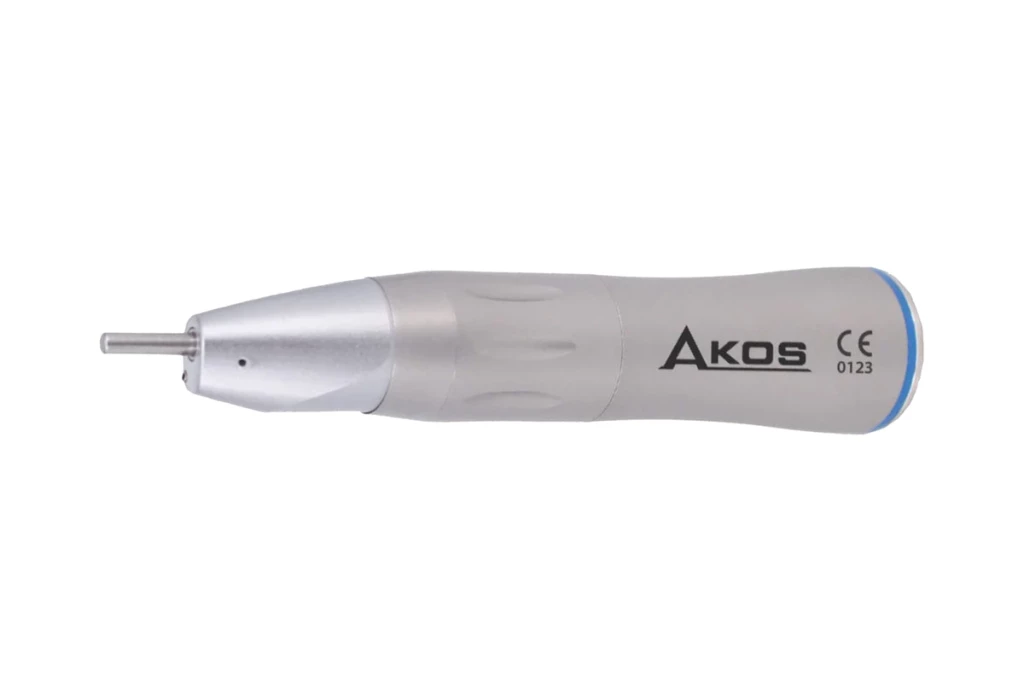

LOW-PRICE standard handpiece
Sold out
The item you're interested in is currently out of stock. Explore our catalog for a wide range of similar products
Sold out
The item you're interested in is currently out of stock. Explore our catalog for a wide range of similar products
Description
Common characteristics
When considering the purchase of a low-price standard handpiece, it's essential to understand the common characteristics that define these tools. While they may be budget-friendly, they often come with specific features and limitations that can impact their performance and longevity. Below are some of the key characteristics to look for:
1. Material Quality
Low-price handpieces are typically made from less expensive materials. This can affect their durability and resistance to wear and tear. Common materials include:
- Plastic Components: Many low-cost handpieces utilize plastic parts, which can be less durable than metal alternatives.
- Basic Stainless Steel: Some models may use stainless steel, but often of a lower grade, which may not withstand heavy use.
2. Performance and Power
Performance is a critical aspect of any dental handpiece. Low-price options may have limitations in this area:
- Lower RPM: These handpieces often operate at lower revolutions per minute (RPM), which can affect cutting efficiency.
- Inconsistent Torque: The torque may not be as consistent, leading to variable performance during procedures.
3. Noise and Vibration
Another characteristic of low-price handpieces is the level of noise and vibration they produce:
- Increased Noise: Budget handpieces may generate more noise during operation, which can be uncomfortable for both the dentist and the patient.
- Higher Vibration: Excessive vibration can lead to hand fatigue and discomfort during extended use.
4. Maintenance Requirements
Maintenance is crucial for the longevity of dental handpieces. Low-price options may have specific maintenance needs:
- Frequent Lubrication: These handpieces often require more frequent lubrication to maintain performance.
- Shorter Lifespan: Due to lower quality materials, they may have a shorter lifespan compared to higher-end models.
5. Compatibility and Accessories
Compatibility with existing dental equipment and accessories is another consideration:
- Limited Compatibility: Low-price handpieces may not be compatible with all dental units or accessories, limiting their versatility.
- Basic Accessories: They often come with fewer or lower-quality accessories, which can affect overall functionality.
6. Warranty and Support
Finally, the warranty and customer support associated with low-price handpieces can vary:
- Limited Warranty: Many budget options come with a shorter warranty period, reflecting their lower quality.
- Minimal Customer Support: Support services may be less comprehensive, making it challenging to resolve issues.
Understanding these characteristics can help dental professionals make informed decisions when considering low-price standard handpieces. While they may offer an attractive price point, weighing the pros and cons is essential for ensuring quality patient care.
Indications for the use in dentistry
In the ever-evolving field of dentistry, the choice of instruments can significantly impact both the efficiency of procedures and the overall patient experience. Among these instruments, the low-price standard handpiece has gained attention for its affordability and versatility. Here are some key indications for its use in dental practice:
1. Routine Dental Procedures
Low-price standard handpieces are ideal for a variety of routine dental procedures, including:
- Prophylaxis: Effective for scaling and polishing teeth during regular cleanings.
- Restorative Work: Suitable for cavity preparation and finishing restorations.
- Endodontics: Useful in root canal treatments for accessing and shaping canals.
2. Educational Settings
In dental schools and training programs, low-price handpieces serve as excellent tools for students to practice their skills without the financial burden of high-end equipment. This allows for:
- Hands-on Learning: Students can gain practical experience in a controlled environment.
- Cost-Effective Training: Institutions can equip more students with necessary tools at a lower cost.
3. Budget-Conscious Practices
For dental practices operating on a tight budget, low-price standard handpieces offer a viable solution. They provide:
- Affordability: Lower initial investment compared to premium handpieces.
- Maintenance Savings: Often easier and cheaper to maintain, reducing long-term costs.
4. Emergency Situations
In emergency dental situations, having a reliable yet affordable handpiece can be crucial. Low-price handpieces can be used for:
- Quick Interventions: Efficiently addressing urgent dental issues without delay.
- Temporary Solutions: Providing immediate care while waiting for more advanced equipment.
5. Specialty Practices
Some specialty practices may find low-price standard handpieces beneficial for specific applications, such as:
- Pediatric Dentistry: Lightweight and easy-to-handle options for treating children.
- Geriatric Dentistry: Handpieces that are user-friendly for elderly patients with limited mobility.
6. Backup Equipment
Every dental practice should be prepared for equipment failure. Low-price standard handpieces can serve as:
- Reliable Backup: Ensuring continuity of care during equipment malfunctions.
- Emergency Preparedness: Keeping costs low while maintaining operational readiness.
7. Non-Surgical Procedures
For non-surgical dental procedures, low-price handpieces can be effectively utilized for:
- Cosmetic Treatments: Polishing and finishing procedures that require precision.
- Orthodontic Adjustments: Adjusting appliances and performing minor modifications.
In summary, low-price standard handpieces are versatile tools that can be effectively utilized in various dental settings. Their affordability, reliability, and ease of use make them an excellent choice for routine procedures, educational environments, and budget-conscious practices.
Benefits of using in dental practice
In the ever-evolving field of dentistry, practitioners are constantly seeking ways to enhance their practice while managing costs effectively. One significant area where savings can be realized is in the choice of dental handpieces. The use of low-price standard handpieces offers numerous benefits that can positively impact both the dental practice and patient care.
Cost-Effectiveness
One of the most apparent advantages of low-price standard handpieces is their affordability. By opting for these handpieces, dental practices can significantly reduce their overhead costs. This financial flexibility allows practices to allocate resources to other essential areas, such as staff training or advanced dental technologies.
Quality Performance
Contrary to the misconception that low-price handpieces compromise quality, many standard handpieces are designed to deliver reliable performance. These handpieces often feature durable materials and efficient engineering, ensuring they can withstand the rigors of daily use while maintaining consistent performance.
Accessibility for New Practices
For new dental practices or those looking to expand, investing in low-price standard handpieces can make high-quality dental care more accessible. These handpieces allow practitioners to equip their clinics without incurring significant debt, enabling them to focus on building their patient base and reputation.
Ease of Maintenance
Low-price standard handpieces are often designed with ease of maintenance in mind. Many models feature simple disassembly processes, allowing dental professionals to clean and service them efficiently. This ease of maintenance can lead to reduced downtime and increased productivity within the practice.
Variety of Options
The market for low-price standard handpieces is diverse, offering a wide range of options to suit different dental procedures. Practitioners can select handpieces that best fit their specific needs, whether for restorative work, endodontics, or general dentistry. This variety ensures that dentists can find the right tools without breaking the bank.
Improved Patient Comfort
Modern low-price standard handpieces are designed with patient comfort in mind. Many models are lightweight and ergonomically designed, reducing hand fatigue for the dentist and enhancing the overall experience for patients. A comfortable dental visit can lead to increased patient satisfaction and loyalty.
Enhanced Workflow
Utilizing low-price standard handpieces can streamline dental workflows. With reliable performance and ease of use, these handpieces can help dental professionals complete procedures more efficiently. This efficiency not only benefits the practice's bottom line but also allows for more time to be spent on patient care.
Compatibility with Existing Equipment
Many low-price standard handpieces are designed to be compatible with existing dental equipment. This compatibility allows practices to upgrade their handpieces without the need for additional investments in new equipment, making it a cost-effective solution for enhancing practice capabilities.
Positive Environmental Impact
Choosing low-price standard handpieces can also contribute to a more sustainable practice. Many manufacturers are now focusing on eco-friendly materials and production processes, allowing dental practices to reduce their environmental footprint while still providing high-quality care.
- Cost savings for better resource allocation
- Reliable performance without high costs
- Accessibility for new and expanding practices
- Ease of maintenance for increased productivity
- Variety to meet diverse procedural needs
- Improved patient comfort for enhanced experiences
- Streamlined workflows for efficient practice management
- Compatibility with existing equipment
- Positive environmental impact through sustainable choices
Sold out
The item you're interested in is currently out of stock. Explore our catalog for a wide range of similar products